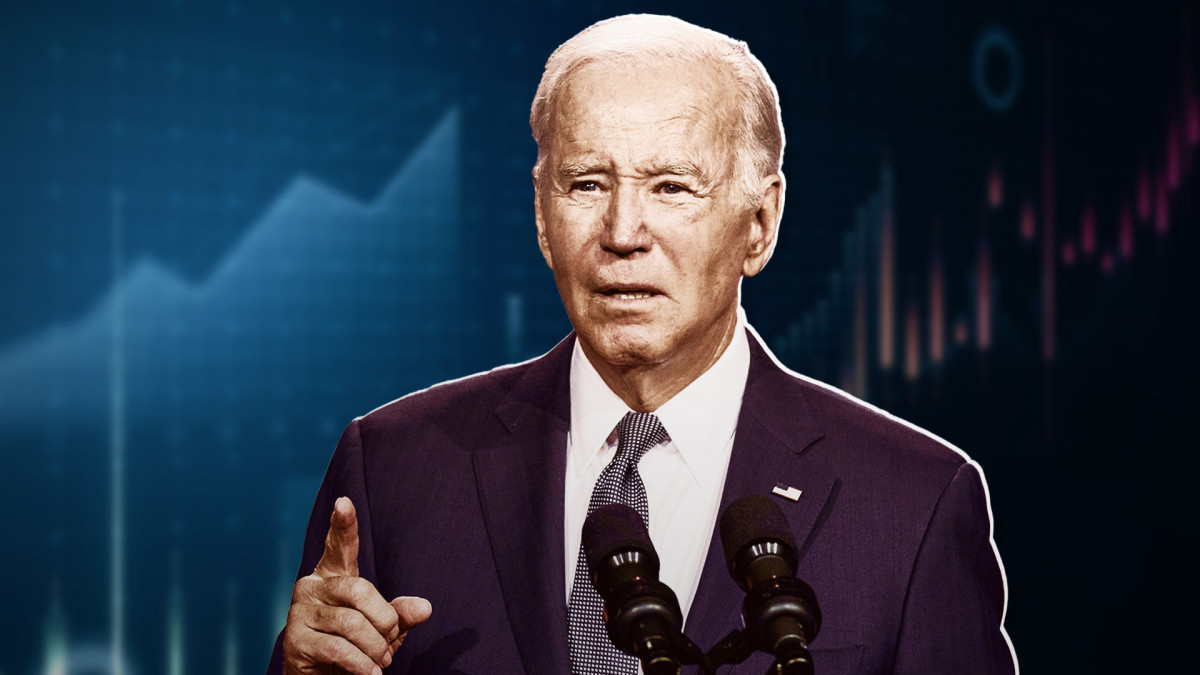
President and re-election candidate Joe Biden has decided to run his campaign on a term that was originally used to criticize Biden's economy. But what is Bidenomics exactly?
During the nearly two-year lockdown, the President passed varying economic policies meant to help keep the economy afloat. Before the election, you might need Bidenomics explained through an overview — from the CARES Act to inflation rates and more.
What is Bidenomics?
Beginning in March 2021 with the American Rescue Plan, Biden unveiled a series of legislative relief efforts, vaccination programs, and stimulus projects that have come to be known collectively as “Bidenomics.” They were aimed at quickly getting the economy back on track and took cues from President Franklin Delano Roosevelt’s New Deal, which included massive workforce employment programs that helped lift the economy out of the Great Depression.
“Even as they faced an immediate economic and public health crisis — with a raging pandemic, elevated unemployment, snarled supply chains, and hundreds of thousands of small businesses at risk of shuttering — the President … understood that it wouldn’t be enough to simply go back to the economy we had before the pandemic,” stated the White House in a news release called “Bidenomics is Working.”
Biden’s goal was to “fundamentally change the economic direction of our country” through a three-pronged approach:
- Investments in infrastructure, particularly improving the country’s roads, bridges, airports, and public transit systems, at a cost of over $1 trillion
- Growing the middle class by raising the minimum wage, expanding healthcare access, and creating new jobs, particularly in manufacturing industries
- Helping American businesses by containing inflationary forces and cutting the federal deficit
Through Bidenomics, President Biden promised to “rebuild our economy from the middle out and the bottom up,” which meant he concentrated on aid and incentives to middle-class Americans and small businesses.
This differed from the “trickle-down” approach of some Republican presidents like Ronald Reagan. These politicians favored tax cuts and incentives for the rich, stating that over time, the middle and lower classes would benefit from residual effects.
In the years since Biden took office, measures such as the American Rescue Plan, the Infrastructure Investment and Jobs Act, the Build Back Better Plan, the Inflation Responsibility Act, and the Fiscal Responsibility Act were signed into law.
The Biden White House points to the 13 million jobs created, 10 million applications for new small businesses, low unemployment levels, and dampening inflation as measures of its success.
However, critics have questioned whether Bidenomics is actually fulfilling its promises.
Bidenomics explained
The phrase “Bidenomics,” is a mix of the words “Biden” and “economics." It was first coined in 2021 by “The Wall Street Journal,” which is owned by News Corp. (NWSA) -), the Murdoch family’s conservative news media conglomerate.
Republican lawmakers opposed the magnitude of Biden’s funding, particularly the $1.9 trillion American Rescue Plan, believing that the President’s ambitious economic plans would result in an increased deficit. They also point to the job growth Biden takes credit for as simply the rebound of previously held jobs before the Covid crisis—not new jobs created.
Others believe that Bidenomics actually fostered the high levels of inflation that the Federal Reserve first believed was “transitory” but later attempted to quell through a series of steep interest rate hikes in 2022 and 2023. This slowed GDP growth and threatened to send the fragile economy into a recession.
One vocal detractor of Biden’s policies was Georgia Congresswoman Marjorie Taylor Greene (R-Ga.). Known for yelling “liar” at his State of the Union address, Greene delivered a scathing speech to residents of Turnbull, PA, which mockingly compared Biden’s achievements alongside presidents like Lyndon B. Johnson and FDR.
But the Biden campaign used this to their advantage by including her words in a campaign video set to uplifting music. Biden posted the video on X (formerly Twitter) with the words “I approve this message,” and in its first four months, it garnered over 42 million views, 254,000 likes, and 58,000 retweets.
Voters are often known to judge a President based on the economy’s performance during their years in the White House. They get blamed when things are bad and take all the credit when they’re good. So, the concept of “Bidenomics” isn’t really new.
The bigger question voters seem to be asking is, “Are Biden’s policies working?”
Is Bidenomics working?
According to a CBS News/YouGov poll, Americans are “uncertain” about the economy and believe it’s “struggling” more than it’s “rebounding.” A lot of that has to do with the higher prices they are paying, as 70% of those surveyed said that their work income has not kept up with inflation.
And what about Bidenomics as a campaign pitch? When asked if they had heard of the term “Bidenomics,” 60% had not. Of those who had, half said that negative outcomes, like “higher inflation” and even “higher taxes” immediately come to mind, even though tax increases have never been a part of Biden’s agenda.
These answers may stem from conservative news media reports. According to GDELT, an open-source platform that monitors news transcripts dating back to 1979, conservative news sources have associated Bidenomics with concepts like inflation and higher taxes at nearly three times higher rates than more liberal news media, like CNN.
So, if #TeamBiden wants to keep using the term Bidenomics, his campaign has its work cut out for it in terms of stemming voter dissonance. Or, in the words of “Mean Girls,” they may need to stop trying to make ‘fetch’ happen.
Biden’s Chicago Bidenomics speech
Biden has spoken publicly about his own views on whether or not Bidenomics is working.
In his Nov. 6, 2023 remark to labor unions in Chicago, which he referenced as a “town of big shoulders” due to its proudly blue-collar roots, the President talks about Bidenomics — specifically, how his policies are helping middle-class Americans live better lives.







